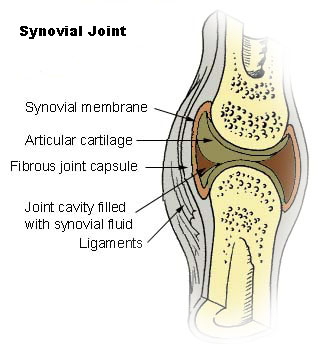Interleukin-10
From Proteopedia
| Line 11: | Line 11: | ||
IL-10 is investigated for its role in patients with [http://en.wikipedia.org/wiki/Rheumatoid_Arthritis Rheumatoid Arthritis] (RA) as well as those with [http://en.wikipedia.org/wiki/Osteoarthritis Osteoarthritis] (OA)<ref>PMID:8163935</ref>. | IL-10 is investigated for its role in patients with [http://en.wikipedia.org/wiki/Rheumatoid_Arthritis Rheumatoid Arthritis] (RA) as well as those with [http://en.wikipedia.org/wiki/Osteoarthritis Osteoarthritis] (OA)<ref>PMID:8163935</ref>. | ||
RA is an autoimmune disorder that affects the [http://en.wikipedia.org/wiki/Synovial_membrane synovial] tissues via chronic synovitis. Chronic synovitis often results in joint destruction due to re-absorption of bone and the distruction of cartilage<ref>PMID:19758192</ref> <ref>PMID:8163935</ref>. | RA is an autoimmune disorder that affects the [http://en.wikipedia.org/wiki/Synovial_membrane synovial] tissues via chronic synovitis. Chronic synovitis often results in joint destruction due to re-absorption of bone and the distruction of cartilage<ref>PMID:19758192</ref> <ref>PMID:8163935</ref>. | ||
| - | IL-10 is found to spontaneously be produce in synovial tissue of patients with RA and OA but not in normal synovial tissue.The variation in secretion of IL-10 is thought to be at about 75% under the control of the genetics of the individual<ref>PMID:19758192</ref>.When IL-10 is | + | IL-10 is found to spontaneously be produce in synovial tissue of patients with RA and OA but not in normal synovial tissue.The variation in secretion of IL-10 is thought to be at about 75% under the control of the genetics of the individual<ref>PMID:19758192</ref>.When IL-10 is present there is a inhibition of the proinflammatory cytokines, namely TFN-α, IL-1α, IL-1β, IL-6, IL-8 <ref>PMID:1940799</ref>. |
Revision as of 02:11, 19 March 2010
Interlukin-10 2H24
Crystal structure of human IL-10
Interleukin-10 is in the class cytokine.[1] Interleukin-10 is a very powerful anti-inflammatory cytokine that is most commonly found to be produce by moncytes [2]. IL-10 has the ability to be a immunosupressive as well as a anti-angiogenic this means that it has the ability both promot and inhibit tumors[3]. There are many types of cytokines that have many funtions such as from antiinflammatory cytokines,cytokine synthesis inhibitory factor and proinflammitory cytokines[4].
There are many interleukins that fall within the cytokine class such as IL-1,IL-2,IL-3,IL-4...IL-31,IL-32,IL-33,IL-3 and IL-35.
| |||||||||
| 2h24, resolution 2.00Å () | |||||||||
|---|---|---|---|---|---|---|---|---|---|
| Related: | 1inr | ||||||||
| |||||||||
| |||||||||
| |||||||||
| Resources: | FirstGlance, OCA, PDBsum, RCSB | ||||||||
| Coordinates: | save as pdb, mmCIF, xml | ||||||||
IL-10 is investigated for its role in patients with Rheumatoid Arthritis (RA) as well as those with Osteoarthritis (OA)[5]. RA is an autoimmune disorder that affects the synovial tissues via chronic synovitis. Chronic synovitis often results in joint destruction due to re-absorption of bone and the distruction of cartilage[6] [7]. IL-10 is found to spontaneously be produce in synovial tissue of patients with RA and OA but not in normal synovial tissue.The variation in secretion of IL-10 is thought to be at about 75% under the control of the genetics of the individual[8].When IL-10 is present there is a inhibition of the proinflammatory cytokines, namely TFN-α, IL-1α, IL-1β, IL-6, IL-8 [9].
| Please do NOT make changes to this Sandbox until after April 23, 2010. Sandboxes 151-200 are reserved until then for use by the Chemistry 307 class at UNBC taught by Prof. Andrea Gorrell. |
Proteopedia Page Contributors and Editors (what is this?)
Shelly Huebert, Andrea Gorrell, Alexander Berchansky, David Canner, Jaime Prilusky, Michal Harel


